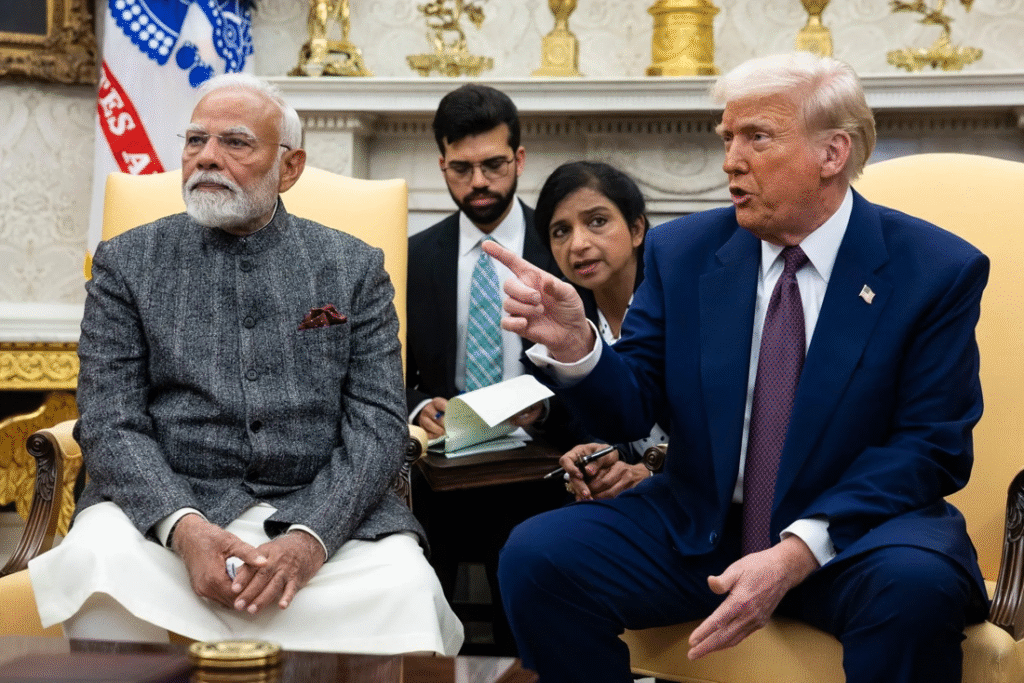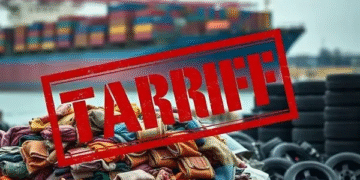The Shockwave That Rattled the Markets
It all started with a post. On the morning of July 30, 2025, former US President Donald Trump took to his Truth Social platform and announced a move that sent tremors through global financial markets: the United States would impose a 25% tariff on all goods imported from India, effective August 1. As if that weren’t enough, Trump added that an “unspecified penalty” would accompany the tariffs, targeting India for its continued purchase of Russian oil and weapons during the ongoing war in Ukraine. This announcement, delivered in Trump’s typically blunt and incendiary style, was more than just a policy shift—it was a geopolitical thunderclap. The Indian stock market opened in the red, the rupee faltered, and analysts scrambled to assess just how deep this cut would be. What had started as a routine morning soon spiraled into a day of economic reckoning.
Beneath the Numbers – What Do the Tariffs Really Mean?
To the untrained eye, tariffs might appear to be just another line item in an economic spreadsheet. But their implications run deep. Tariffs are essentially taxes on imported goods, and when they increase, it is consumers and exporters who bear the brunt. With Trump slapping a 25% tariff on Indian exports, key sectors—such as pharmaceuticals, textiles, leather, automobiles, and marine products—are set to be hit hard. Experts like Aditi Nayar, chief economist at ratings agency Icra, warn that this move will drag India’s GDP growth lower than anticipated. Icra has already reduced its growth forecast from 6.5% to 6.2%, citing the adverse impacts of these tariffs. Nomura, another financial services giant, suggests a 0.2% dip in India’s GDP could be on the cards. This isn’t just about numbers—it’s about jobs, livelihoods, and the nation’s developmental trajectory.
A Trade Relationship on the Edge
India and the United States have long danced around a trade agreement, with both sides negotiating in bursts of optimism and frustration. Over recent months, India had taken conciliatory steps, including reducing tariffs on Bourbon whiskey and motorcycles, in an effort to woo the US into a mutually beneficial trade deal. But Trump’s latest move underscores a more complicated narrative. The US still runs a $45 billion trade deficit with India, a figure Trump has repeatedly cited as a justification for his tariff aggression. His goal: to balance the scales, and in his view, bring fairness back to American trade. The question remains: at what cost? In targeting India, Trump is playing a high-stakes game that could backfire, both economically and diplomatically.
Russia, Oil, and the Penalty Problem
Why did Trump target India now? The answer lies in geopolitics. Since the start of the Russia-Ukraine war, India has walked a tightrope, balancing its historic ties with Russia against its growing relationship with the West. India’s continued purchase of Russian oil and military equipment has drawn criticism from Western capitals, but the Indian government has defended its stance. Energy security, they argue, cannot be compromised. Millions of Indians depend on affordable energy, and India must buy at the best available price. Trump’s penalty aims to punish this pragmatism. But by linking tariffs to foreign policy decisions, Trump is introducing a volatile mix into trade negotiations. According to Mark Linscott, a former US trade representative, this hyphenation complicates the situation and might derail any chances of a near-term trade pact.

India vs. the Competition
Tariffs are not imposed in a vacuum. Countries like Vietnam and China, long seen as India’s competitors in manufacturing and exports, have recently negotiated better deals with the US. Vietnam, for instance, saw its proposed tariff drop from 46% to 20% after direct negotiations with Trump. Even China, embroiled in its own trade war with the US, succeeded in getting tariffs reduced from 145% to 30%. India, now saddled with a 25% tariff plus penalties, is at a competitive disadvantage. According to Rahul Ahluwalia of the Foundation for Economic Development, this could derail India’s ambitions of attracting export supply chains in sectors like textiles and electronics. The expected shift of global manufacturing to India may no longer materialize, leaving policymakers scrambling for alternatives.
The Domino Effect on Indian Industry
For Indian exporters, this move is a nightmare. Price renegotiations with American buyers have already begun. Dr. Ajay Sahai, who leads a federation of Indian exporting organizations, believes that exporters will either have to absorb the cost hike or lose business altogether. Lower profit margins, layoffs, and decreased investment in export-oriented sectors may follow. The Federation of Indian Chambers of Commerce and Industry (FICCI) has expressed hope that this is a short-term hiccup, but the damage to confidence is already done. India’s commerce ministry is currently evaluating the impact, with early indications suggesting a deep dive into sectors like agriculture, dairy, and MSMEs—which are politically sensitive and economically vital.
A Diplomatic and Economic Lesson for Youth
There is a lesson in this for young Indians, especially those studying economics, international relations, or entrepreneurship. Global trade is not just about selling goods—it’s about building relationships, understanding the interconnectedness of markets, and anticipating geopolitical shifts. India’s youth must realize that economic strength is rooted not just in production, but in negotiation and diplomacy. As India aims to be a global economic powerhouse, young entrepreneurs and professionals must advocate for diversification in export markets, resilience in supply chains, and innovation in production. Most importantly, they must understand that in an uncertain world, adaptability is the greatest asset.

The Road Ahead – Hope Amidst Uncertainty
Despite the tension, all hope is not lost. Negotiations between India and the US are expected to continue through August, with both sides aiming for a fall deadline to conclude a comprehensive trade deal. Experts suggest that the 25% tariff could be temporary, eventually settling in the 15-20% range. While this is still higher than expected, it is a far cry from the worst-case scenario. The Reserve Bank of India may step in with monetary easing to cushion the blow, potentially lowering interest rates to stimulate growth. What lies ahead is uncertain, but one thing is clear: India will need to strategize, negotiate, and innovate like never before. The choices made in the coming weeks will not just define trade balances, but shape the nation’s economic destiny for years to come.
















